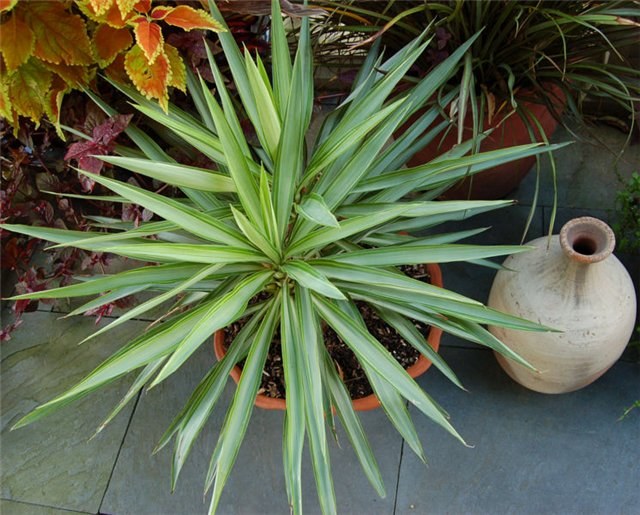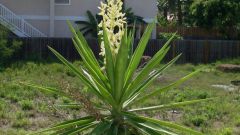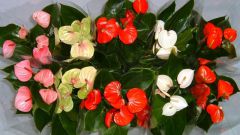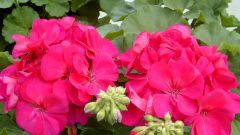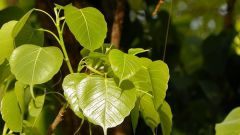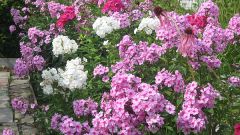Yukka – indoor decorative plant, with beautiful bright evergreen leaves like a small palm tree. The tree grows slowly, but during the vegetative period reaches 4 meters in height, for this reason, it is necessary to take care of the space for flower and suitable care.
Breeding plants is a laborious and often appears on leaves aphids or they may turn yellow, wilt, fall off, the Yucca is no exception – she is as vulnerable to diseases and disorders of the growing season.
If your plant has yellow leaves (usually the first to be affected bottom longline), remember about elementary rules of care for a Yucca. So, home of agave, required bright light, but one that will not fall to direct sunlight. Loves Yucca and humidity is high, its pot can be put in a tray of water, but on the condition that the lower layer of the main pot has a good drainage. Especially important to use this design in the summer, coupled with daily spraying.
Yucca is very sensitive, its leaves can begin to dry because of a simple change of location and change of conditions is always stressful for plants.
Not tolerate agave and transplanting, during which developed root system almost always gets injured. Maybe after a while the plant to cope with the damage and will begin to develop on, stopping to drop leaves, but experts still advise to use in the adaptation period feeding.
Irregular watering will cause the leaves begin to dry. The root systems of Yucca weak in waterlogged soil the plant will start to rot, badly affect the condition can and watering with cold water. For Yucca, it is important to maintain normal operating temperature, when abrupt changes in the temperature of the air, the leaves curled and yellow at the tips is the first sign that you need to relocate a tree.
Summer comfortable temperature for Yucca not more than 25 ° C and in winter not less than 10C. To reduce temperature should be done gradually starting from autumn, if the winter is not to lower the temperature to the desired, the leaves begin to thin, dry and over time can completely fall off.
Cause damage to leaves can be and defeat aphids or gray mold. Usually gnats and rot is clearly visible in the root zone and at the base of the affected leaf. To fight against diseases need to use household insecticide.
Don't forget that defoliation is a natural process for the plant, characteristic for the stage of intensive growth, subsidence of a small number of leaves in this case should not be cause for concern.
Care Yucca
Breeding plants is a laborious and often appears on leaves aphids or they may turn yellow, wilt, fall off, the Yucca is no exception – she is as vulnerable to diseases and disorders of the growing season.
Even undemanding plant requires the necessary level of humidity, temperature, lighting, and irrigation – all this affects the appearance of the leaves and as the plant as a whole.
If your plant has yellow leaves (usually the first to be affected bottom longline), remember about elementary rules of care for a Yucca. So, home of agave, required bright light, but one that will not fall to direct sunlight. Loves Yucca and humidity is high, its pot can be put in a tray of water, but on the condition that the lower layer of the main pot has a good drainage. Especially important to use this design in the summer, coupled with daily spraying.
Disease and natural organic processes
Yucca is very sensitive, its leaves can begin to dry because of a simple change of location and change of conditions is always stressful for plants.
Not tolerate agave and transplanting, during which developed root system almost always gets injured. Maybe after a while the plant to cope with the damage and will begin to develop on, stopping to drop leaves, but experts still advise to use in the adaptation period feeding.
Irregular watering will cause the leaves begin to dry. The root systems of Yucca weak in waterlogged soil the plant will start to rot, badly affect the condition can and watering with cold water. For Yucca, it is important to maintain normal operating temperature, when abrupt changes in the temperature of the air, the leaves curled and yellow at the tips is the first sign that you need to relocate a tree.
Summer comfortable temperature for Yucca not more than 25 ° C and in winter not less than 10C. To reduce temperature should be done gradually starting from autumn, if the winter is not to lower the temperature to the desired, the leaves begin to thin, dry and over time can completely fall off.
We must not forget about proper watering: in summer it needs to be more frequent, but winter shouldn't be zealous enough weekly irrigation – otherwise the plant will rot.
Cause damage to leaves can be and defeat aphids or gray mold. Usually gnats and rot is clearly visible in the root zone and at the base of the affected leaf. To fight against diseases need to use household insecticide.
Don't forget that defoliation is a natural process for the plant, characteristic for the stage of intensive growth, subsidence of a small number of leaves in this case should not be cause for concern.
